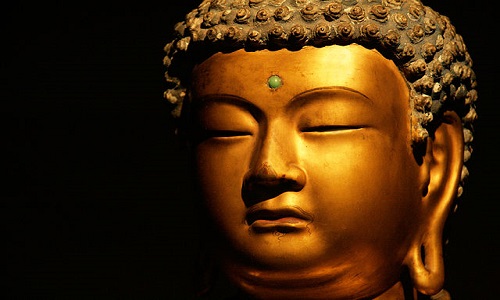Difference Between Buddha and Bodhisattva
Introduction
The word Buddha is an English corruption of the pronunciation of the Sanskrit word “Buddh1”. Bodhisattva is the combination of two Sanskrit words – “Bodhi” and “Sattv”.The word “Sattva2 “in Bodhisattva is again an English corruption of the pronunciation of the Sanskrit word “Sattv”.
Background
Buddh in Sanskrit means wise. It is related to the word Buddhi.
According to Arya[Hindu] Religious Philosophy or Dharm [pronounced Dha-rum]3 , the Human Brain has four functions– Manas, , Chitta , Ahamkar and Buddhi . Manas refer to mental activity caused by inputs via the five senses. Acting like the sixth sense, Manas function of the human brain, rejects or accepts these inputs and transform them into ideas. Chitta is the store house that provides “the known” or “memories” or “habit patterns” for mental activities and associations. The word Ahamkar, composed of Aham [me/I] and Kar [which acts/acts] refers to the feeling of individuality [I do, I am] or the I-sense of an individual. Buddhi is the mind’s natural and pure state where it is connected to the state of higher consciousness, where there is no distinction between a perceiving subject and perceived objects. It is the highest function of the human brain, the function of discrimination.
While the above are the functions of the Brain4, every human brain is born with a basic predominant quality or Ghun. There are three kinds of Ghun or quality i.e. Sattv (Light, Peace and harmony), Rajas (heat, movement, passion and wrath) and Tamas (dullness, ignorance, stagnation and depression). These three ghuns mould the Manas or mental activity of the brain. Every brain at birth has one of these Ghuns as its main quality giving the individual his or her dominant behavior pattern and character. At the same time the three Ghuns at a gross level mould the mind at every moment of its functioning causing the change in moods of an individual.
Under normal conditions, most human brain are born with either Rajas Ghun or Tamas Ghun as their dominant characteristic giving rise to a materialistic bent of mind. This prevents our natural and pure state or Buddhi from shining forth resulting in the individual not realizing his true identity of being only a Witness and not a doer and of his or her connections and relations with the supreme consciousness. This disconnect prevents the individual from utilizing his full human potential and evolution to higher level in human consciousness.
Dharam is meant to restore the Manas to its natural state of Sattvic Ghun where the Buddhi functions naturally. Dharm teaches the theory and practice of restoring to his or her Manas its Sattvic Ghun so that the Buddhi is allowed to function fully and effectively.
Buddh/Buddha
When an individual is able to control his mental activities Sattv Gunh comes to dominate the Manas, the misinterpreted view (Maya) of reality drops off, the Buddhi shines forth, a true perspective of reality arises and the individual sees reality as it is. Comprehending the causal mechanism due to which sentient beings come in and go out of existence he is freed from the cycle of birth and death. Having understood the true nature of things he is able to view and face the ups and downs of life with a calm and peaceful mind thus becoming free of the stress, torments, worries and sufferings that characterizes day to day life of an individual.
Such an individual whose mental faculties are molded by Sattv Ghun and in whom the Buddhi is functioning in its full glow is said to be a Buddh or wise one or an awakened one. Such an individual was Siddharth Gautam /Siddhartha Gautama known as Buddh/The Buddha or Buddh Bhagwaan/Lord Buddh.
Bodhisattva
Bodhisattva is composed of the words Bodhi and Sattva. Bodhi means perfect knowledge or wisdom. It is pure, universal and immediate knowledge. Sattv is a state of mind in which the mind is steady, calm and peaceful and in which mental activity, speech and actions are synchronized to maintain this state of mind.
So Bodhisattva5 is one who pursues Bodhi with Sattva. That is an individual who pursues the perfect knowledge with a steady, calm and peaceful mind by exercising control on his or her mental activity, speech and actions, carefully synchronized. Such an individual is an aspiring Buddha or Bodhisattva.
Conclusion
A Buddha is thus an awakened being, a realized being who knows the truth of reality while Bodhisattva is an individual striving to achieve the state of Buddha and to become a Buddh or Buddha.
- Difference Between Indian Farmer and U.S. Farmer - January 11, 2016
- Difference Between Ashtanga and Vinyasa - January 11, 2016
- Difference Between Indian Muslim and Arab Muslim - December 3, 2015
Search DifferenceBetween.net :
Leave a Response
References :
[0]https://commons.wikimedia.org/wiki/File:WLANL_-_mwibawa_-_Gouden_Buddha_%281%29.jpg

